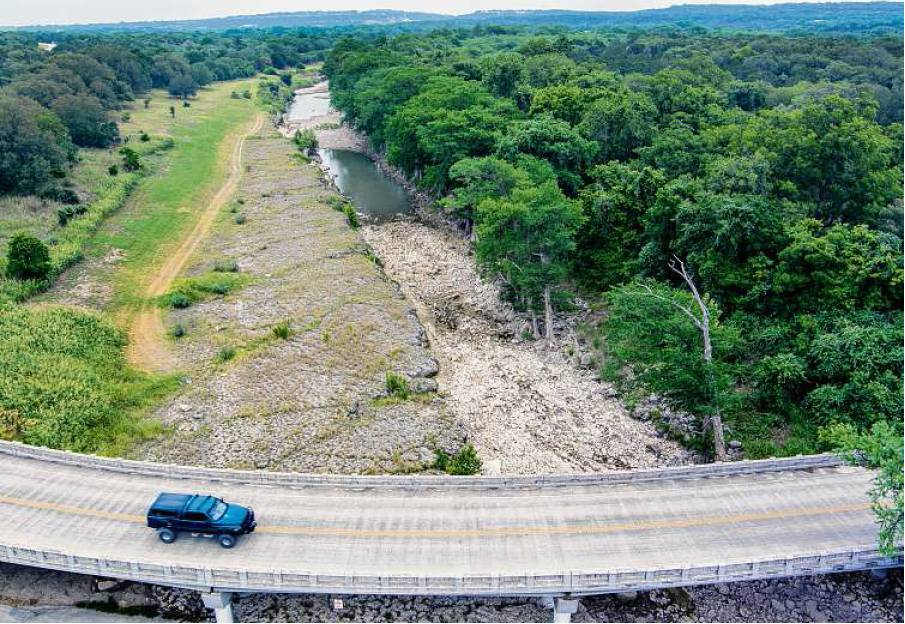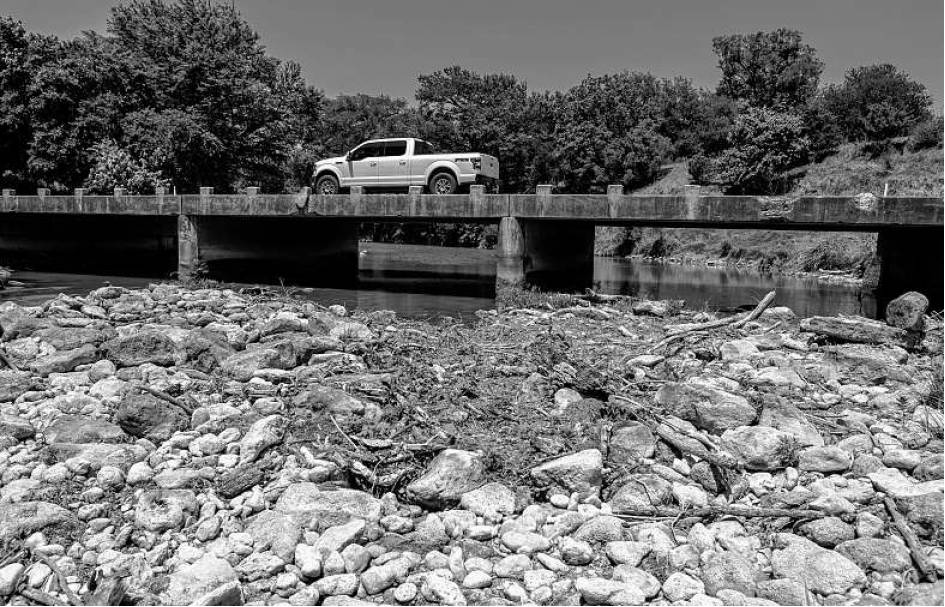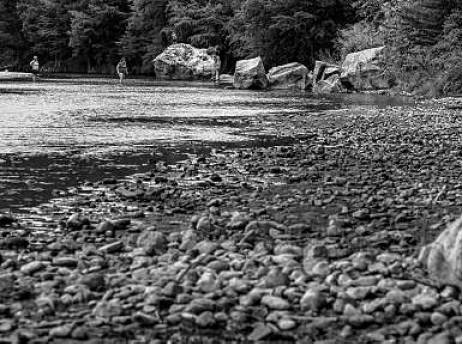Going with the flow
Guadalupe River down but not out as dry weather affects the ecosystem
By Elena Bruess STAFF WRITER
The Guadalupe River is feeling the impact of scorching hot, dry weather in south central Texas, but river officials are not overly concerned about it yet.
Stretching from Kerr County — northwest of San Antonio — to the Gulf of Mexico, the Guadalupe River is a popular destination for tubing, rafting, swimming and other recreational activities. It is also an important ecosystem for Texas wildlife and an essential element of the region’s water system.
This year, the river’s flows are much lower than average and are expected worsen as the summer goes on. At Spring Branch, just upstream from Canyon Lake, the river’s flow rate is 11.6 cubic feet per second, according to the U.S. Geological Survey, well below the longterm medium flow for that area of the river of 282 cubic feet per second.
And yet the massive reduction in flow is not a massive cause for alarm right now, said Nathan Pence, executive manager of environmental science at the Guadalupe-Blanco River Authority. The water flowing south of Canyon Lake, he said, is sufficient to sustain recreation and animal life, and the lake’s level — about 2 feet low — is better off than that of other reservoirs in the state.
In the popular Guadalupe swimming areas near New Braunfels and San Marcos, the water flows are at 164 and 133 cubic feet per second, respectively.
“I think with the conditions that we have and the lack of rainfall that we have had, that it is not necessarily unusual, and it’s to be expected,” Pence said. “Folks who live in that area are used to seeing either flash floods or droughts, which is the nature of the Hill Country. So when there is no rain, we do experience low flows in the river. But this isn’t any different than any other year with these sorts of conditions.”
The last time the river’s flows were this low was during the drought from 2011 to 2014. Before that, the lowest flow rate at Spring Branch occurred during the 1956 drought, when the flow rate dropped to zero.
Whether conditions are wet or dry, the river’s flows generally increase on the way to the Gulf Coast, Pence said.
And although less water reaching the bay can affect the fragile ecosystem by the Gulf of Mexico, these Texas ecosystems have adapted to high- and low-water events. Significant problems only arise when extremely dry or wet conditions persist for excessively long periods. Last year was particularly wet, so one dry year isn’t expected to crush a fishery or a specific species.
Most species are pretty adaptable to natural changes in flows, and they can handle brief periods of drought, said Myron Hess, an environmental lawyer in Austin. But there is another concern: Rising water temperatures will cause fish to start dying.
“When temperature goes up, dissolved oxygen levels tend to go down. And if the oxygen levels get low enough, aquatic species can’t survive,” Hess said. “Some species can move to other areas of the river, but animals like muscles can’t move very fast and get stranded above the water and die.”
Also, it will be difficult for species to bounce back from repeated droughts in south central Texas. The more frequent the severe weather, the harder it will be for animals to survive. That could become a key concern as climate change causes temperatures to rise and ecosystems to dry out.
“If you have these droughts more often and closer together, you start losing more and more areas for species like muscles,” Hess said. “Eventually, they can’t recover anymore.”
This year, it’s hard to predict how the summer will turn out and, therefore, what the river flow will be by July or August. May is usually a wet month in San Antonio, but this May brought hardly any rain, which is concerning to Hess. Also, the weather phenomenon La Niña is predicted to persist, bringing more dry and hot weather.
But for now, while there will be parts with low flows, popular areas below Canyon Lake on the Guadalupe River for tubing and swimming remain active for Texans looking to escape the heat.
“There is definitely water in the system as of now,” Pence said. “The river is open for recreation, and folks can still come out and enjoy themselves.”
Elena Bruess writes for the Express-News through Report for
America, a national service program that places journalists in local newsrooms. ReportforAmerica.org . elena.bruess@express-news.net



